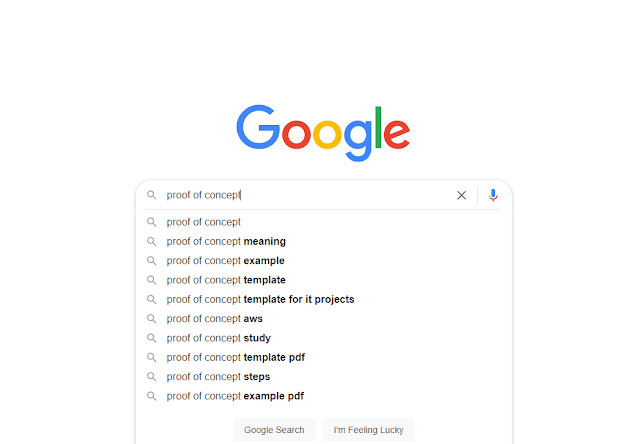The Power of Inbound Marketing
Inbound marketing is changing how businesses connect with their audience. Instead of screaming for attention like those old-school ads, it pulls in potential customers with quality content and captivating experiences. It’s less about shouting, more about drawing folks in naturally.
Benefits of Inbound Marketing
Picking inbound marketing isn’t just a fancy choice; it’s a smart one. Imagine this: it brings in 54% more leads than the classic “spray and pray” marketing tactics. And that’s not all—here’s why it rocks:
| Benefit | Description |
|---|---|
| More Leads | It reels in not just more leads but better ones—folks who are genuinely interested and more likely to buy. |
| Boosted Brand Awareness | Around 80% of B2B companies lean on content marketing to get noticed, upping their brand game. |
| Budget-Friendly | Inbound marketing is lighter on the wallet when compared to traditional ways. You save money without skimping on results. |
| Built Strong Relationships | When you provide useful information, folks come to you willingly instead of feeling interrupted (Cognism). |
Success Stats: Inbound Marketing is Winning
Stats don’t lie—this stuff works! Turns out, 80% of bigwigs prefer getting their intel from well-crafted articles rather than pushy ads. Plus, a whopping 53% of website visits come straight from folks searching stuff up organically (Hyperise).
Check out these numbers that highlight why inbound marketing’s a no-brainer:
| Statistic | Value |
|---|---|
| B2B Leads from Content Marketing | 80% |
| More Leads With Inbound | 54% |
| Traffic from Search Engines | 53% |
Clearly, putting effort into good content pays off when more eyes find you online. By using smart inbound marketing tools and eye-opening inbound marketing strategies, B2B brands can take their marketing game to a whole new level.
Elements of an Effective Strategy
In mastering inbound marketing for B2B, I’ve learned it’s all about great content and knowing the big shots who call the shots. That’s your ticket to getting folks interested and making those sweet conversions happen.
Content Creation for Inbound Marketing
Quality content is where the magic happens. It’s not just about grabbing attention; it’s about giving people the know-how they need and building a connection that lasts. From my journeys, creating a mix of content that speaks directly to different buyer personas really amps up the interaction.
When creating content, here’s what I focus on:
- Educational Blog Posts: Articles loaded with valuable insights on industry puzzles.
- Case Studies: True stories showing off how products or services spark solutions.
- Whitepapers and E-books: Deep dives that offer worthwhile knowledge and boost authority.
- Videos: Eye-catching stuff that makes tough subjects easy-peasy.
By mixing these different content styles, I’m ready to suit varying tastes and learning quirks. For peeks at more examples, check out my stash of inbound marketing examples.
Importance of Targeting Company Decision-Makers
In B2B dealings, you must get how different folks hold the keys to the kingdom. It’s not just a solo mission; on average, about six to ten folks have a say in the buying game. Each one has their own agenda, which means you gotta serve up content that speaks to each of ’em. This tailored approach doesn’t just catch their eye—it increases the chance of sealing the deal.
To grab decision-makers’ attention, here’s my go-to plan:
- Developing Buyer Personas: Sketching out detailed profiles for each important player to get a bead on what they need and their pesky problems.
- Personalized Content: Cook up content that zeroes in on the individual hurdles faced by each mover and shaker, adding a personal touch.
- Multi-Channel Distribution: Make sure content finds its way to the right people via the channels they dig, boosting your visibility.
Being spot-on with the audience and handing them content relevant to their needs helps me build tighter bonds and rev up my inbound marketing mojo. For extra tips on getting your marketing groove on, have a look at my guide on inbound marketing strategies.
Maximizing Lead Generation
When it comes to inbound marketing for B2B, getting the most out of lead generation is the name of the game for long-lasting success. I’ve tinkered with all sorts of stuff, and two tricks that’ll up your lead game are offering gated content and diving into the shiny world of technology to give your efforts a boost.
Utilizing Gated Content
Normally, when folks mention gated content, we’re talking about goodies you hand over to potential customers in exchange for their deets. I mean, who wouldn’t want some juicy insights or tools? Hooking leads with something like fresh research, lead magnets, webinars, and product demos can give your lead numbers a good shove upwards. Rumor has it, gated content packs quite the punch in rounding up leads big time.
Here’s a quick cheat sheet of gated content options:
| Type of Gated Content | Description |
|---|---|
| E-books | Deep dives into niche topics. |
| Webinars | Live or on-demand sessions with top industry minds. |
| Case Studies | Real-life examples of how your stuff rocked someone’s world. |
| Research Reports | Fresh takes and insights on what’s trending. |
| Product Demos | Hands-on experiences showing what you got. |
Rollin’ out gated content needs some pre-show prep. You gotta crank out high-caliber stuff that speaks to your crowd. It’s like killing two birds with one stone—capture those leads and show off your smarts in your field.
Leveraging Technology for Lead Generation
Can’t forget about throwing tech into the lead gen mix—it’s like magic. Trust me, when I threw some marketing automation software into the ring, the results were tight—we trimmed down marketing costs by 12.2%. That freed up cash to pump up content and sharpen our overall game.
Looks like a whopping 82% of marketers are set on investing more into tech tools as we slide through 2022. Tech streamlines everything, keeps lead handling breezy, and swaps cookie-cutter sales pitches for custom fits, which ups the odds of sealing the deal.
Marketing automation tools can cozy up interactions real fast, engaging leads without burning out your team. Companies like Drift get real fancy with account-based marketing (ABM) strategies. They whip up tailor-made content suggestions and special landing spots for each account, cozying up to target crowds effectively.
Mesh that gated content with snazzy tech? Not only does it juice up lead gen, but businesses connect deeply with potential customers, juicing up inbound marketing all-around. If you’re itching for more tips and tricks, take a peek at various inbound marketing strategies and inbound marketing tools to supercharge your lead generation game.
Personalized Marketing Approach
When it comes to making your marketing mojo work, tapping into personalized marketing is like hitting the sweet spot. It’s about making genuine connections with my audience, ensuring they feel like I’ve crafted content just for them. Email marketing and dynamic content are the driving forces behind this strategy, helping me keep things fresh and relevant.
Email Marketing Strategies
Some might think email’s old school, but it’s the bedrock of any marketing game plan. It’s my way to chat with folks about exciting new content and share exclusive goodies through various mediums. By knowing my audience like the back of my hand, I can dish out top-notch recommendations (1827 Marketing).
Here’s how I spice up my email strategy:
| Email Strategy | What It Does |
|---|---|
| Segmentation | Zeros in on certain audience clusters depending on what they like or who they are. |
| Personalization | Sprinkles personal touches using data to make it hit home. |
| Automated Workflows | Pops the right email into inboxes when my audience expects it, keeping the conversation lively. |
By jazzing up my emails with these tactics, I can boost open rates, clicks, and conversions—making email my go-to tool in the marketing playbook.
Dynamic Content for Personalization
Dynamic content is like the little black dress of marketing—it fits just right, every time. Whether it’s emails, landing pages, or entire sites, it shapes up based on who’s looking at it. Say, if someone’s into a particular industry, they get content that speaks their lingo. This chameleon-like content ups the user experience and engagement, giving conversions a solid nudge.
Here’s the lowdown on using dynamic content:
| Dynamic Content Type | What’s It About? |
|---|---|
| Personalized Emails | Tweaks the subject and body text to strike a chord. |
| Tailored Landing Pages | Switches up the vibe to resonate with specific folks. |
| Targeted Web Pages | Spotlights the right products based on what users have checked out before. |
Dynamic content is my secret sauce to get folks feeling like my message is tailor-made for them. It strengthens strategies, deepening connections and nudging those all-important conversions.
When I bring together my A-game in email marketing with the genius of dynamic content, my audience gets top-notch, made-just-for-them experiences. This is what ramps up their engagement and helps hit those marketing goals. For more insights on revamping your marketing efforts, dive into our dedicated resources on inbound marketing strategies.
Nurturing Customer Relationships
Alright, let’s chat about something that might not sound as exciting as a theme park adventure, but it’s super crucial if you’re in the biz of inbound marketing for B2B. We’re talking about keeping those customer relationships snug and strong. Think of CRM as your friendly sidekick in this mission and lead nurturing as the reliable bridge to conversions.
Role of CRM in Marketing Automation
So, here’s the lowdown: CRM, or Customer Relationship Management, is like having a super-smart digital buddy that helps automate your marketing hustle. Imagine spotting your most excited customers, giving them a fist bump, and letting them know you appreciate them with some special perks. It’s all about creating those warm, fuzzy feelings about your brand.
When you blend CRM with marketing automation, it’s like mixing peanut butter with jelly – everything just works better. You get to know your audience well, shoot out customized messages, and the best part? More than 80% of marketers are hopping on the tech train to up their game in 2022. So, join the fun, won’t ya (1827 Marketing)?
| CRM Perks | What It Means |
|---|---|
| Spot-on Targeting | Find potential fans by their quirks and tastes. |
| Sweet Talk | Zap those custom messages to keep your crowd engaged. |
| Rock-solid Loyalty | Reward your frequent flyers to keep ’em coming back. |
Impact of Lead Nurturing on Conversions
Now, let’s get on the nurturing train because it’s key in turning “meh” leads into “heck yeah” sales. When you play your cards right with lead nurturing, conversions shoot up like your favorite fireworks on the 4th of July. It’s about getting up close and personal, revving up the chat, and bumping up your sales.
And guess what? Bringing in automation adds a cherry on top by cutting down marketing costs by a cool 12.2%. This means more moolah for crafting stellar content and sharpening your campaigns. That’s a perfect combo for those underdog businesses ready to elbow out the big guns (OneIMS).
Here are some lead nurturing tricks to keep conversions rolling:
| Nurturing Masterstrokes | What’s It All About |
|---|---|
| Custom Emails | Chatty notes that vibe with your customers’ likes and moves. |
| Focused Blitz | Zero in on parts of your audience with stuff they’ll dig. |
| Interaction Check | Keep an eye on the buzz and tweak your tactic as needed. |
If you mix CRM smarts and nifty lead nurturing, your marketing mojo gets a serious boost. You’ll not only beef up customer ties but turn regular folks into die-hard fans. For more tasty tidbits, swing by my writings on inbound marketing strategies and inbound marketing automation.
Tailoring Content for B2B
From my experiences, putting together the right content for B2B is like making the perfect sandwich; it needs the right ingredients to satisfy your clients. You gotta nail two things: telling everyone why your product rocks and getting to know who’s buying.
Unique Value Proposition Communication
Let’s break it down. You want to communicate what makes your stuff special in a way that’s as clear as why puppies are adorable. Your unique value proposition (UVP) is like a neon sign flashing why you’re the best in class. It’s all about showing off what makes your product or service stand out, like the best cookie in a bakery. You gotta back it up with stats, stories, and customer shout-outs to show you know your stuff and mean business.
When I’m sharing the UVP, I use good old blog posts, whitepapers, and real stories. These help paint a picture that potential clients can see and feel, showing them what’s in it for them. Here’s a quick look:
| Content Type | Purpose | How It Works |
|---|---|---|
| Blog Posts | Share knowledge | Builds trust, keeps folks reading |
| Whitepapers | Deep dive into topics | Proves you’re an expert, builds trust |
| Case Studies | Show success | Real proof, makes it all relatable |
| Testimonials | Client stories | Boosts trust, helps with decisions |
Using these, I can show a killer UVP that pulls folks in like a good story.
Importance of Buyer Personas
Knowing who’s in your customers’ corner is like knowing your favorite coffee order. It’s a big deal. By figuring out who you’re talking to and what they care about, you make them feel like you made this just for them. I create these personas to help guide content, focusing on what different folks in an organization need and stress over.
To get these buyer personas right, I do homework: surveys, chats with real people, and digging for data. This helps me zero in on things like job titles, things that bug them, and how they like to decide on new tools or services. Here’s a snapshot of how I map these personas:
| Persona Name | Job Title | Frustrations | Goals | Content They Love |
|---|---|---|---|---|
| Marketing Sam | Manager | Not enough resources | More brand buzz | Blog posts, infographics |
| IT Taylor | Director | Security hassles | Slicker tech stacks | Whitepapers, webinars |
| Sale Alex | Executive | Finding leads | Better sales efficiency | Case stories, customer tales |
Having these in my toolkit means I can whip up content that fits like a glove, making people interested in what I’ve got to say—and more likely to click that ‘buy’ button.
For a deeper dive into how you can spice up your inbound marketing game, check out some other nuggets I’ve put together about getting the best bang for your content buck.
Using Different Platforms
When cooking up a solid inbound marketing game plan, hopping on a variety of platforms is key. It broadens your horizons and gets potential clients into your circle. The big players in town? Content marketing and search engine optimization (SEO).
Why Content Marketing Matters
Content marketing ain’t just a part of inbound stuff—it’s the heartbeat. Half of the marketing folks are all set to throw more bucks into it, showing just how critical it is (Sopro). Playing around with different content types works wonders in grabbing your audience’s attention and keeps them glued to the goodies you’re serving up.
Here’s what the top content formats look like in my travels through B2B land:
| Content Type | Percentage of Marketers Using It |
|---|---|
| Blog Posts | 89% |
| Email Newsletters | 81% |
| Social Media Content | 81% |
It’s clear as day—a mix of snappy blogs, zippy newsletters, and social media buzz ensures you stay in the game. Plus, I noticed this skyrocketing trend with video content among B2B folks, jumping from 66% usage in 2022 to 75% in 2023 (O8 Agency). Videos can’t help but reel folks in, turning the spotlight on your stuff.
Why SEO is the Real Deal for Inbound Marketing
When it comes to inbound marketing, SEO is like your trusty sidekick. It’s the secret sauce for getting eyeballs on your content and making it shine online. Around 68% of folks start their online journey with a search engine, so nailing SEO means your audience finds you without a hitch (Sopro).
Landing at the top in search results? That’s the sweet spot. The very first Google result clocks in a cool 27.6% of clicks. Shows why tuning your content for SEO is a smart move to rope in fresh leads.
Pumping up SEO not only shines a light on you but also slashes lead generation costs. Turns out, inbound marketing leads are 61% cheaper than the outbound kind (Story Chief). That’s some bang for your buck right there.
By hammering on content marketing and SEO, I’m all set to widen the net and scoop up quality leads. Dive into extra help like inbound marketing examples and inbound marketing tools to give your strategy an extra edge.
Engaging with Social Media
So social media’s totally my jam when it comes to boosting my B2B inbound marketing mojo. It’s my secret sauce for roping in new leads, spreading the word about my brand, and keeping that sweet engagement and website traffic rolling. You know those buzzing platforms like LinkedIn, Instagram, Facebook, and YouTube? They’ve been my ride-or-die crew for connecting with my peeps.
Utilizing Social Platforms
Alright, let’s talk shop: Getting my A-game on social platforms has seriously cranked up my inbound marketing game. Check out how I break it down on each platform:
| Platform | What I Use It For | My Go-To Moves |
|---|---|---|
| Professional hobnobbing | Dish out industry goodies, schmooze with groups | |
| Fanning those brand flames | Toss out cool posts, swing targeted ads | |
| Visual blitz | Slick pics and stories, strut my stuff | |
| YouTube | Brainy vids | Whip up tutorials, show off my gadgets |
Now, we’re talking personalized vibes for each platform to nab those eyeballs just right. By shaking hands and chatting on these channels, I get to build connections, drop golden nuggets, and get folks clicking over to my site.
Importance of Video Content
Can’t stress enough how video’s become a game-changer for me in inbound marketing. B2B marketers riding the video wave jumped from 66% in 2022 to a whopping 75% in 2023, proving it’s the go-to for reeling in audiences (O8 Agency).
Here’s what video brings to my party:
- Amp Up the Action: Videos are like magnets for attention, making sure folks stick around way longer than boring old pics or text.
- Make it Make Sense: Got tricky stuff to explain? Video’s got my back, turning big ideas into easy-to-grab stories for everyone.
- SEO Goldmine: Throwing videos in the mix perks up my search rankings since they keep folks glued to my pages.
As I keep fine-tuning my marketing chops, video’s gonna stay my trusty tool in the kit for keeping my audience hooked. Wanna spice up your content game? Check out my thoughts on inbound marketing content.
Future Trends in Inbound Marketing
Peering into the future of inbound marketing for B2B, I spot two big waves coming our way: virtual events are taking center stage, and account-based marketing, or ABM for short, is on the rise.
Virtual Events and Their Impact
Virtual events are exploding, and not just in a trendy phase way. They’re here to stay, with the industry expecting to grow like a weed at over 21% a year from 2022 to 2030. This boost suggests folks really dig engaging digitally. And why not? Virtual events break down those pesky geographical borders and open the doors wide to a far-reaching audience.
The cool thing is, virtual events aren’t just “another option.” They’re a gold mine for pulling in potential clients and keeping the conversation going. These online shindigs get people talking through Q&As, webinars, and networking, which means engagement rates soar. I’ve seen firsthand how businesses wield these events to keep the momentum going with follow-up content like summaries and extra webinars. It’s a sweet way to boost those inbound efforts even more.
| Year | Growth Expected (%) |
|---|---|
| 2022 | 21.4 |
| 2023 | 21.4 |
| 2024 | 21.4 |
| 2025 | 21.4 |
| 2026 | 21.4 |
| 2027 | 21.4 |
| 2028 | 21.4 |
| 2029 | 21.4 |
| 2030 | 21.4 |
Emerging Strategies in Account-Based Marketing
Now, let’s talk about the more personalized flair of ABM. It’s buzzing because businesses are zeroing in on specific accounts with custom-fit marketing. By going all in on fewer, more targeted leads, companies get a better bang for their buck.
A shining example is how companies like Drift are jazzing up their ABM game. They’re throwing intimate virtual get-togethers, serving up personalized content ideas, and even using live chat for those in-the-moment talks. Plus, crafting special web pages for each customer makes them feel like VIPs (Story Chief).
Bringing these ABM strategies into my marketing world means I can make those all-important connections stronger and pump up the conversion chances. By really getting to know what each account wants, I can tweak how I reach them, hitting the mark just right.
Jumping on these trends is crucial to sticking around in the marketing game. Whether I’m using the wide reach of virtual events or fine-tuning my ABM tactics, the room for growth is huge. As I ride these waves, I’m committed to finding fresh paths to engage with folks and build those lasting bonds.




















